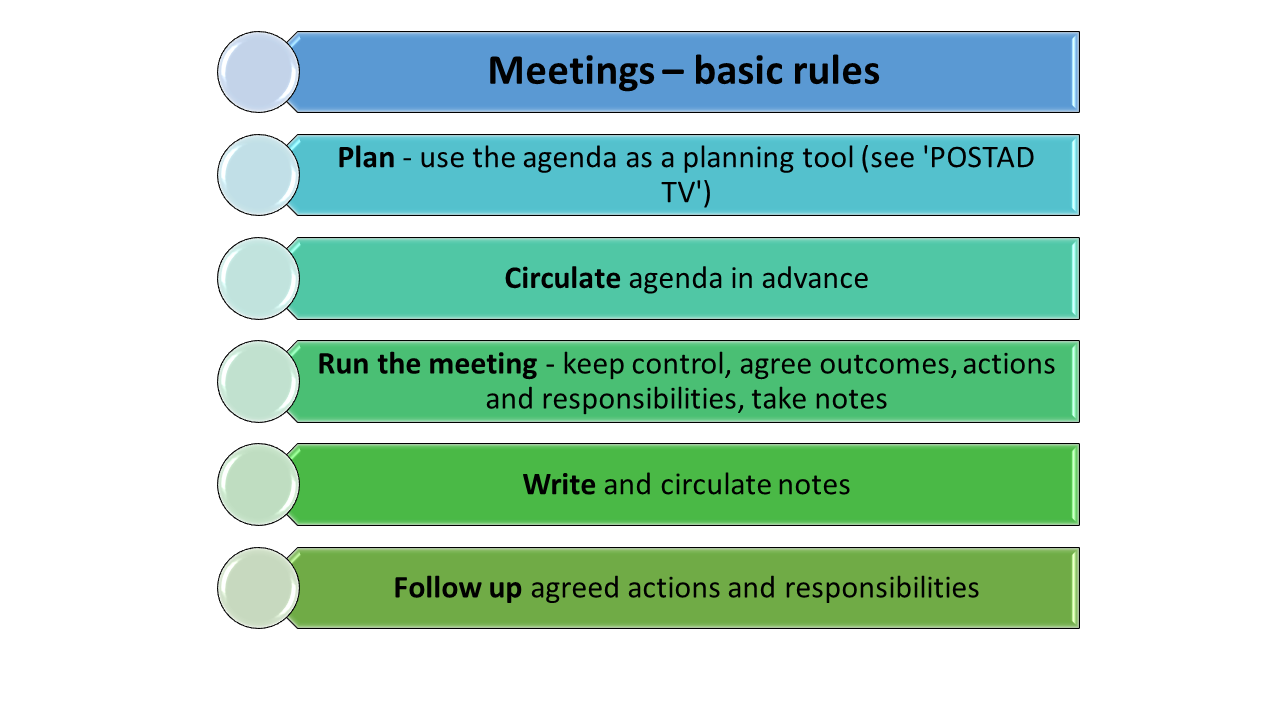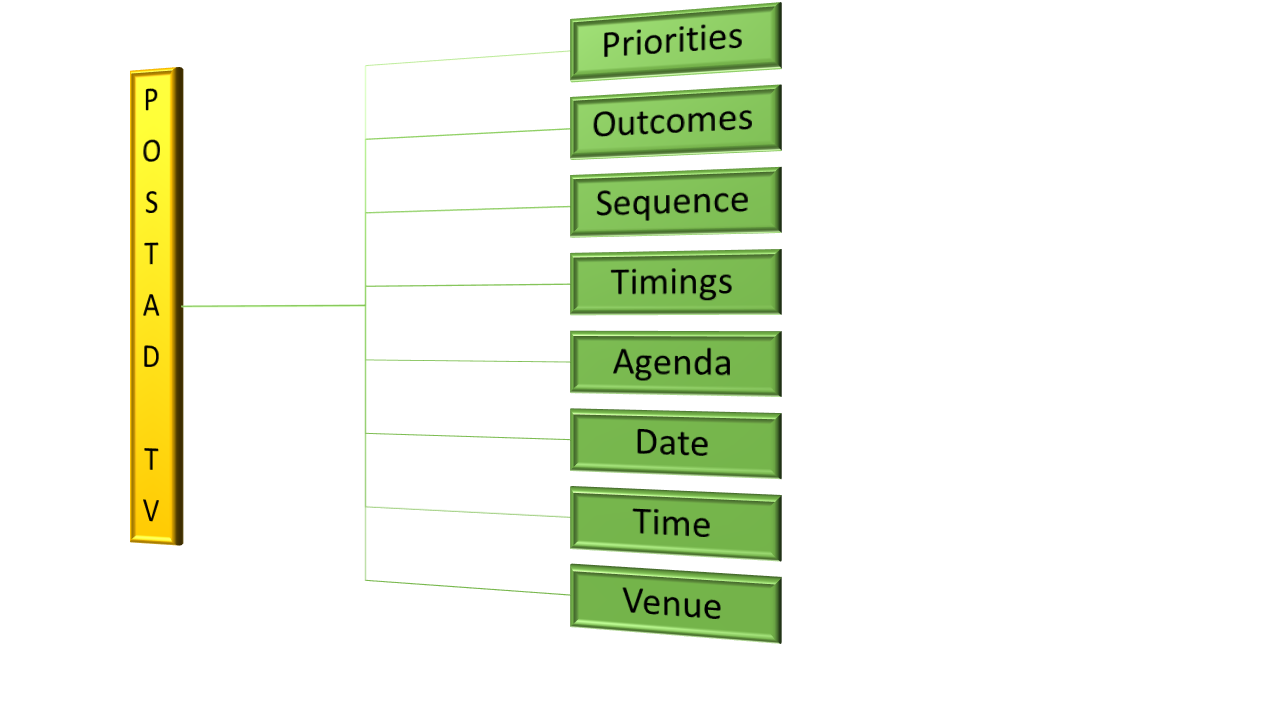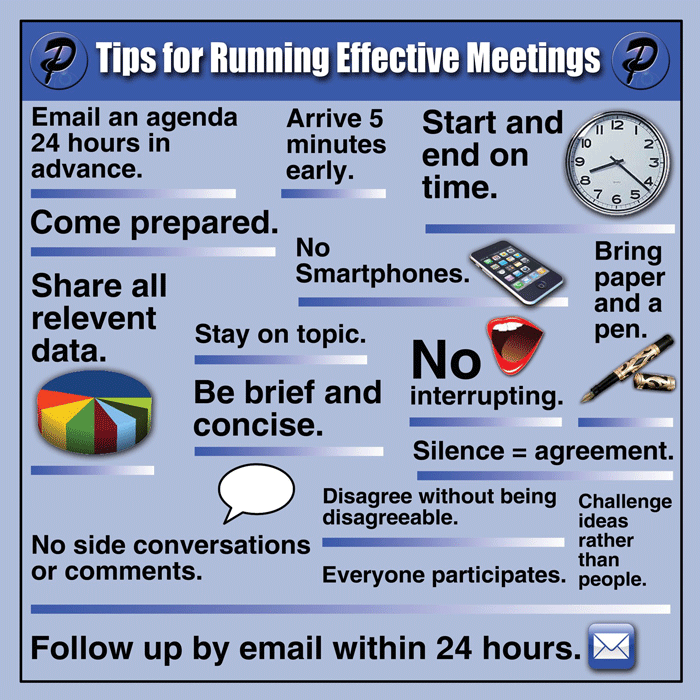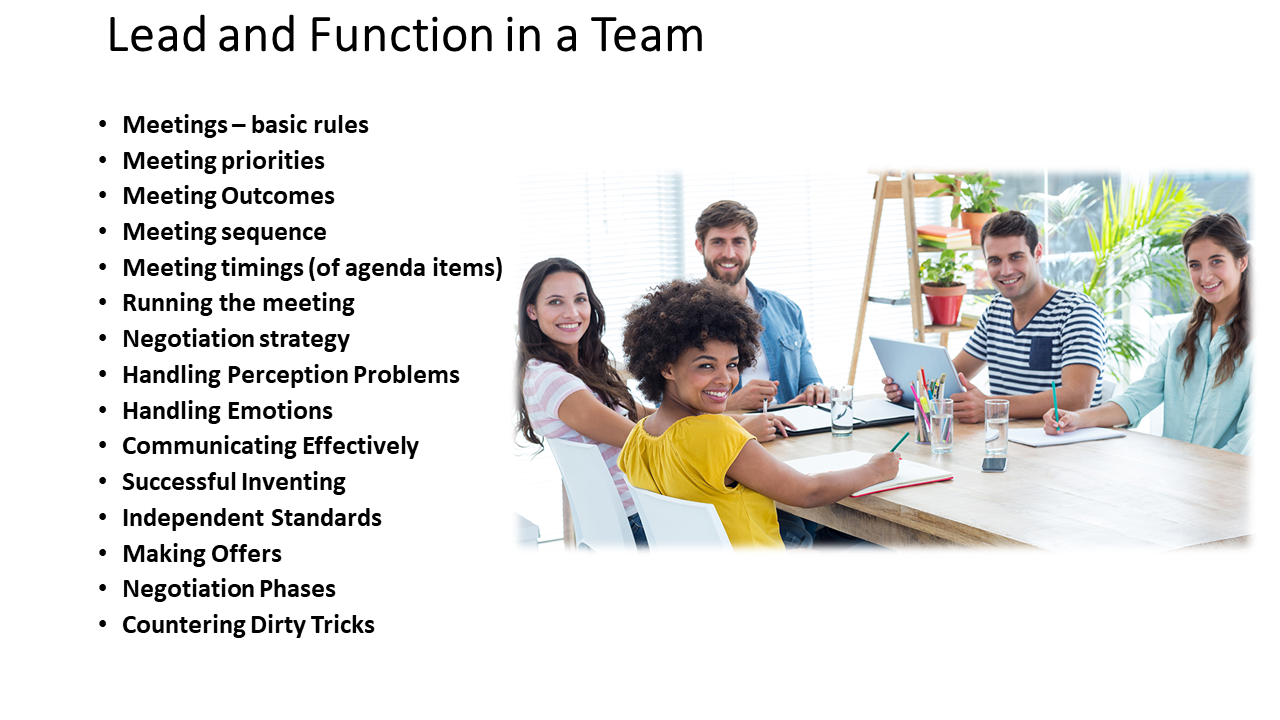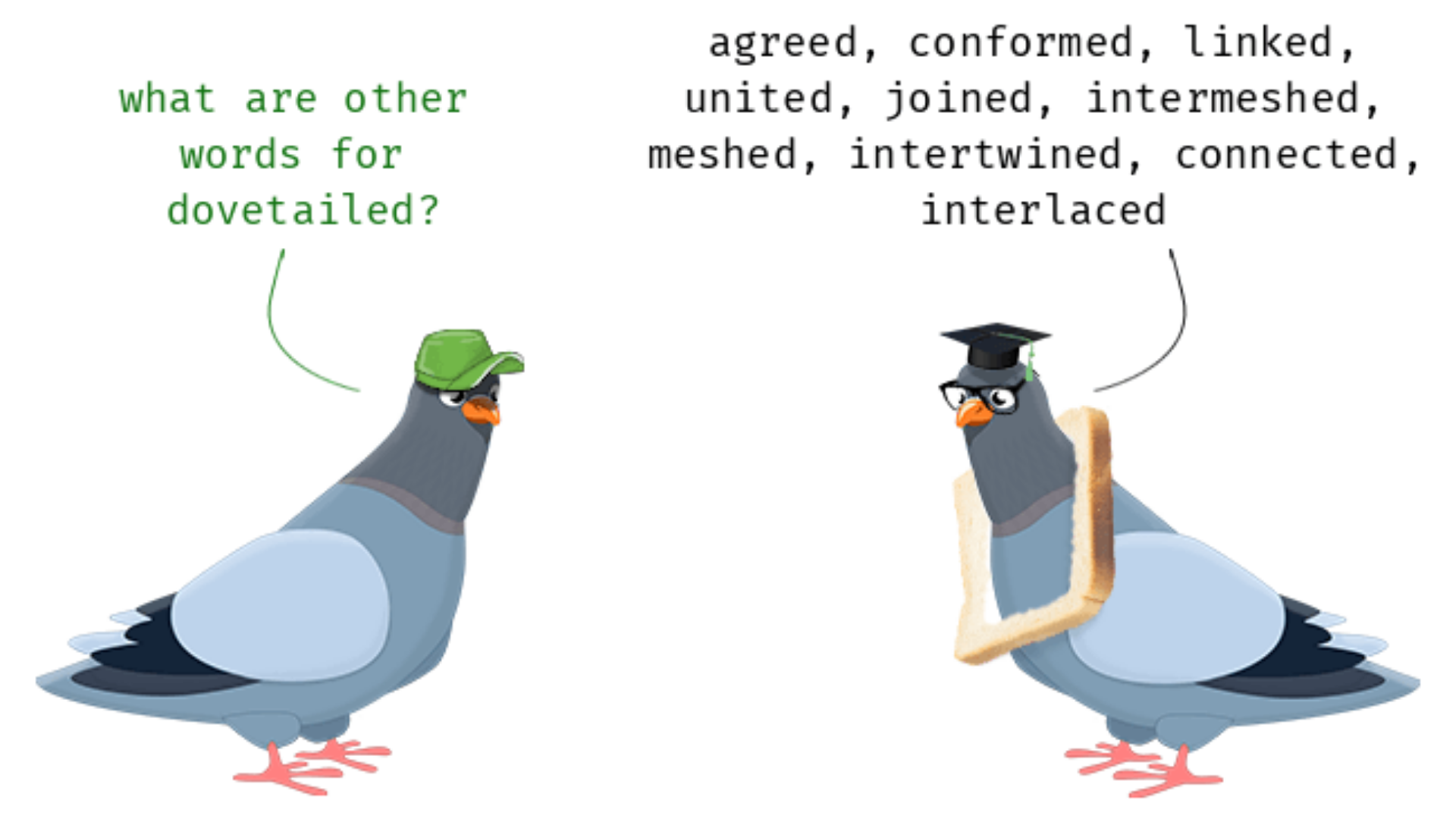Meetings – Basic Rules
Meetings come in all shapes and sizes, and for lots of purposes. Meeting purposes include:
- Giving information
- Training
- Discussion (leading to an objective)
- Generating ideas • Planning • Workshops
- Consulting and getting feedback
- Finding solutions/solving problems
- Crisis management
- Performance reporting/assessment
- Setting targets and objectives
- Setting tasks and delegating
- Making decisions
- Conveying /clarifying policy issues
- Team building
- Motivating
- Special subjects - guest speakers
- Inter-departmental - process improvement
The acronym POSTAD TV shows you how to plan effective meetings, and particularly how to construct the meeting agenda, and then notify the meeting delegates:
Meeting Priorities
What is the meeting's purpose? Always have one; otherwise don't have a meeting. Decide the issues for inclusion in the meeting and their relative priority: importance and urgency. You can avoid the pressure for 'Any Other Business' at the end of the meeting if you circulate a draft agenda in advance of the meeting, and ask for any other items for consideration. ('Any Other Business' often creates a free-for-all session that wastes time, and gives rise to new tricky expectations, which if not managed properly then closes the meeting on a negative note.)
Meeting Outcomes
Decide what outcome (i.e. what is the purpose) you seek for each issue, and put this on the agenda alongside the item heading. This is important, as people need to know what is expected of them, and each item will be more productive with a clear aim at the outset. Typical outcomes are:
- Decision
- Discussion
- Information
- Planning (e.g. workshop session)
- Generating ideas
- Getting feedback
- Finding solutions
- Agreeing (targets, budgets, aims, etc.)
- Policy statement
- Team-building/motivation
- Guest speaker – information, initiatives, etc
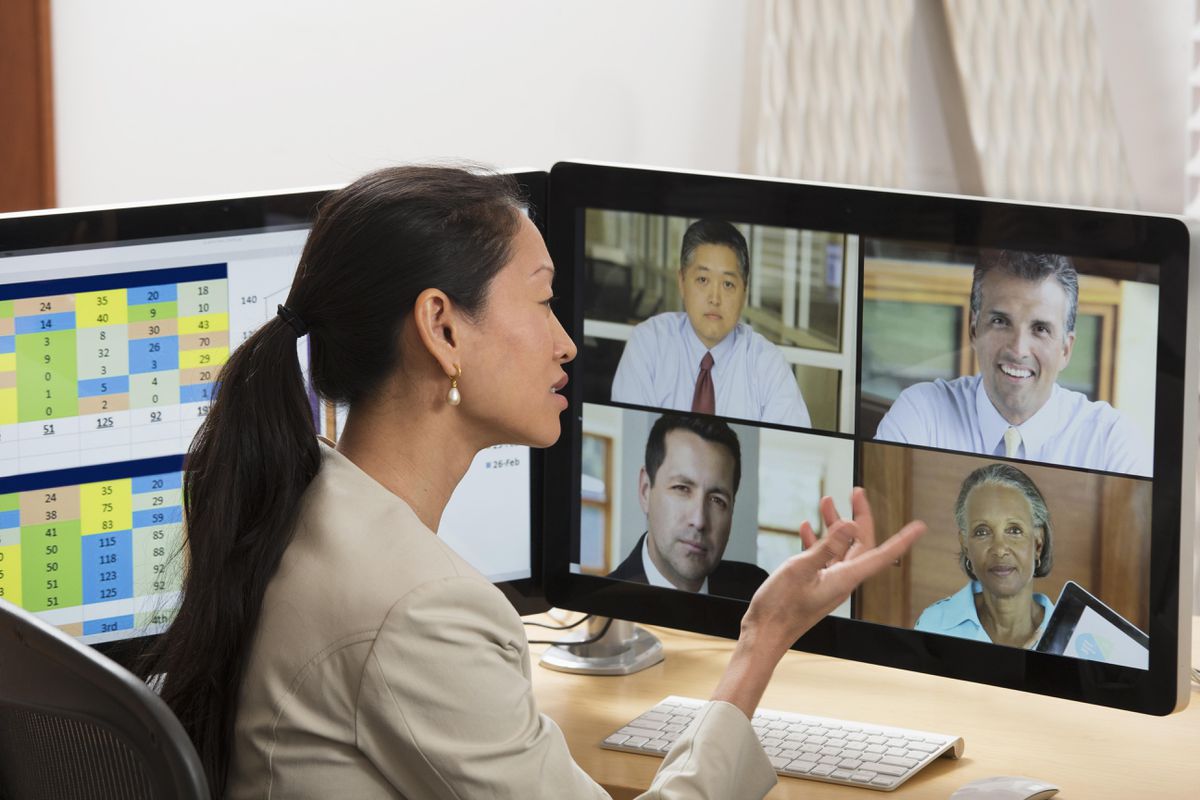

Meeting Sequence
Put the less important issues at the top of the agenda, not the bottom. If you put them on the bottom you may never get to them. Ensure any urgent issues are placed up the agenda. Non-urgent items place down the agenda – if you are going to miss any you can more easily afford to miss these. Try to achieve a varied sequence – don't put all the heavy controversial items together – mix it up.
Meeting Timings (of Agenda Items)
Decide the length of the meeting, and allocate a realistic time slot for each item. Do not try to pack too much in – keep it realistic – things generally take longer than you think. Long meetings involving travel for delegates require pre-meeting refreshments 30 minutes prior to the actual meeting start time.
Put lots of breaks into long meetings. Unless people are participating and fully involved, their concentration begins to drop after just 45 minutes. Breaks don't all need to be 20 minutes for coffee and cigarettes. Five minutes every hour for a quick breath of fresh air and leg-stretch will keep people attentive.

Unless you have a specific reason for arranging one, avoid formal sit-down restaurant lunches – they'll add at least 30 minutes unnecessarily to the lunch break, and the whole thing makes people drowsy. Working lunches are great, but make sure you give people 10-15 minutes to get some fresh air and move about outside the meeting room. If the venue is only able to provide lunch in the restaurant arrange a buffet, or ensure delegates' menu choices are decided well before lunchtime.
Running the Meeting
The key to success is keeping control. You do this by sticking to the agenda, managing the relationships and personalities, and concentrating on outcomes. Meetings must have a purpose. Every item must have a purpose. Remind yourself and the group of the required outcomes and steer the proceedings towards making progress, not hot air.
Politely suppress the over-zealous, and encourage the nervous. Take notes as you go, recording the salient points and the agreed actions, with names, measurable outcomes and deadlines. Do not record everything word-for-word, and if you find yourself taking over the chairmanship of a particularly stuffy group which produces reams of notes and very little else, then change things. Concentrate on achieving the outcomes you set the meeting when you drew up the agenda.
Avoid racing away with decisions if your aim was simply discussion and involving people. Avoid hours of discussion if you simply need a decision. Avoid debate if you simply need to convey a policy issue. Policy is policy and that is that. Defer new issues to another time. Practice and use the phrase 'You may have a point, but it's not for this meeting – we'll discuss it another time.' (And then remember to do it.)
If you don't know the answer say so – be honest – don't waffle – say that you'll get back to everyone with the answer, or append it to the meeting notes. If someone persistently moans on about a specific issue that is not on the agenda, quickly translate it into a simple exploratory or investigative project, and bounce it back to them, with a deadline to report back their findings and recommendations to you. Use the rules on delegation to help you manage people and tasks and outcomes through meetings. Always look at how people are behaving in meetings – look for signs of tiredness, exasperation, and confusion, and take necessary action.
As a general rule, don't deviate from the agenda, but if things get very heavy, and the next item is very heavy too, swap it around for something participative coming later on the agenda – a syndicate exercise, or a team game, a quiz, etc.
Negotiation Strategy
- Separate the People form the Problem
- Focus on Interests behind positions
- Invent Options for mutual gain
- Insist on using Independent Standards
- Develop your Best Alternative to a Negotiated Agreement (BATNA)
Handling Perception Problems
- Put yourself in their shoes
- Don’t blame
- Help them become involved
- Help them save face 4
Handling Emotions
- Recognize, understand, and make explicit the emotions – yours and theirs.
- Allow the other side to let off steam
- Don’t react to emotional outbursts
- Consider apologizing
Communicating Effectively
- Listen actively
- Speak about yourself, not about them
- Speak for a purpose
Useful Phrases for Handling People Problems
- “Let me see if I understand what you just said …”
- “I can appreciate why you feel like that...”
- “I see it this way … How do you see it?”
- “I would like your advice about ...?”
Questions to Uncover Interests
- “Help me to understand why this is really important to you.”
- “What concerns do you have?”
- “What’s the real problem?”
- “What would be wrong with …?”
- “Why not this …?”
- “What are your fears concerning this?”
Successful Inventing
- Invent before you judge.
- Invent a wide range of options.
- Dovetail.
- Use imaginative procedures.
Killer Phrases
- A good idea, but …
- Against company policy
- Be practical
- All right in theory, but …
- The boss won’t go for it
- Are you serious?
Differences that can be Dovetailed
- Different interests
- Same interests, different priorities
- Different values placed on time
- Different forecasts
- Different aversion to risk
- Different beliefs
